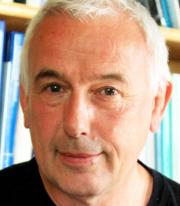Accurate timing and anticipation of seasonal changes is required to initiate physiological adaptations over the course of the year such as hibernation, changes in metabolism, fattening and reproductive activity. To achieve this, organisms have evolved complex seasonal timekeeping systems that rely on day length sensing (photoperiodism), coupled to innate long-term timers ("circannual clock"). The fundamental biological processes giving rise circannual rhythms are not known for any organism. This is a highly integrative topic of wide relevance, integrating multiple levels of understanding from genome to ecosystem. Within this area, my specific interests are:
- The cellular and molecular mechanisms involved in seasonal timekeeping processes
- The adjustment of homeostatic set points in physiology (rheostasis)
- The function of a specialised cell type in the hypothalamus, the tanycyte, in the above processes
- The use of hibernation and maternal photoperiodic programming to investigate the above processes
Current projects:
- Arctic seasonal timekeeping initiative (ASTI), role: Deputy director
ASTI is a capacity-building project to establish UiT as a centre of excellence for research into seasonal timekeeping mechanisms. This fills a strategic gap in chronobiology research worldwide, and is an excellent fit to UiT as the world’s northernmost research university. See the website for themes and specific research projects.
- Tromsø Forskningsstiftelse (TFS) starter grant: Epigenetic light, role: project leader
Website. The project aim was establish my lab in seasonal timekeeping and hibernation at the University of Tromsø. Specific areas of research were the epigenetic basis of seasonal timing, the role of circadian clocks in seasonal timekeeping, and maternal photoperiodic programming effects.
- Sentinel North Transdisciplinary Research Program Université Laval and UiT, The role of circadian clocks in seasonal synchrony in the Arctic, role: Co-PI
This is a comparative circadian/seasonal clockwork project with an emphasis on birds, fish and diatoms.
- Clocks and hypoxia: Linking oxygen to time, role: Co-PI
This is a project investigates the role of circadian clocks and hypoxia in a
diving mammal (hooded seal). It uses high-resolution respirometry of mitochondria, astrocyte/neuronal culture techniques, and lentiviral
reporters to unpick responses to hypoxia in a highly hypoxia-tolerant
animal.
